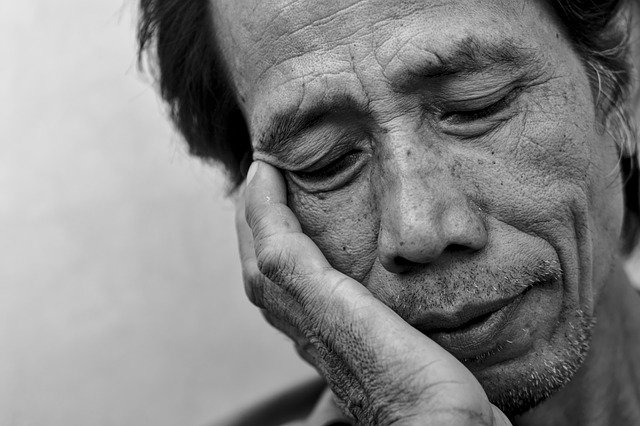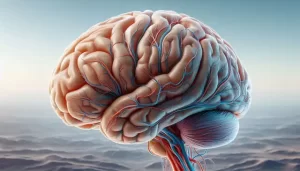How to relieve the fatigue symptoms of patients with Parkinson’s disease?
- A Persistent Crisis: The Looming Specter of Drug Shortages in United States
- Rabies: The fatality rate nearly 100% once symptoms appear
- Human Brain Continues to Grow: Study Shows Increase in Size and Complexity
- CRISPR Genome Editing: From Molecular Principles to Therapeutic Applications
- Metformin Helps Immune System Better Recognize Cancer Cells
- Highlights of Prostate Cancer Research at the 2024 EAU Congress
How to relieve the fatigue symptoms of patients with Parkinson’s disease?
- Red Yeast Rice Scare Grips Japan: Over 114 Hospitalized and 5 Deaths
- Long COVID Brain Fog: Blood-Brain Barrier Damage and Persistent Inflammation
- FDA has mandated a top-level black box warning for all marketed CAR-T therapies
- Can people with high blood pressure eat peanuts?
- What is the difference between dopamine and dobutamine?
- How long can the patient live after heart stent surgery?
How to relieve the fatigue symptoms that often occur in patients with Parkinson’s disease?
People with Parkinson’s disease often report that they are easily fatigued, and this fatigue is not the same as the fatigue after occasional exertion before the disease.
The fatigue of occasional fatigue can be relieved as long as there is enough rest. Now the fatigue that I feel after the illness is continuous, and there is no way to relieve the fatigue through rest.
In fact, for patients with Parkinson’s disease, fatigue is also a relatively common non-motor symptom of Parkinson’s disease. Let’s talk about this topic together now.

Fatigue is one of the most common non-motor symptoms of Parkinson’s disease.
As early as 1967, the famous American Parkinson’s disease specialists Hoehn and Yahr discovered that patients with Parkinson’s disease are prone to fatigue. one of the motor symptoms.
According to relevant research data, about 50% of Parkinson’s disease patients report symptoms of fatigue.
Fatigue symptoms in Parkinson’s disease can be transient or persistent. In a small number of patients, this kind of fatigue symptoms may also appear before motor symptoms, and as the disease progresses, the incidence of fatigue symptoms will gradually increase.
Among the most common non-motor symptoms of Parkinson’s disease, the most common is not hyposmia, constipation, depression, etc., but fatigue.
In a survey of patients with Parkinson’s disease in Italy, 98.6% of 1072 patients had at least one non-motor symptom, and the incidence increased with the duration of the disease and the aggravation of the disease.
Common non-motor symptoms of Parkinson’s disease were: fatigue (58%), anxiety (56%), lower extremity pain (38%), insomnia (37%), urgency and nocturia (35%), salivation and difficulty maintaining Attention (31%). Therefore, fatigue is also one of the most common non-motor symptoms of Parkinson’s disease.
What are the characteristics of fatigue in Parkinson’s disease?
Fatigue is a subjective experience that lacks a standard definition and is often described by patients as a state of extreme mental and/or physical exhaustion, weakness, lack of motivation, and even exhaustion.
Fatigue in Parkinson’s disease can be divided into two major categories: central fatigue and peripheral fatigue, both of which can coexist in PD patients.
Central fatigue has both physical and mental fatigue components and is characterized by difficulty in initiating or maintaining mental or physical activity without organic damage to the motor system.
Physical fatigue
It is mainly manifested in the lack of the ability to independently generate power in sports.
Mental fatigue
It mainly manifests as an overwhelming feeling of exhaustion, lack of energy, and exhaustion.
It may be caused by persistent hypervigilance, mental effort, emotional tension, etc., often accompanied by boredom, repetitive activities, lack of motivation, etc.
Mental fatigue is affected by both psychological and physiological factors, such as the patient’s attention, physical state, and social function, which may affect the patient’s experience of mental fatigue.
Fatigue symptoms in some patients are not simply related to symptoms of tremor, stiffness, or involuntary movements. Depression, anxiety, apathy, or sleep disturbance can also cause fatigue.
Exercise fatigue
This fatigue is associated with motor dysfunction in Parkinson’s disease.
Symptoms of tremors, stiffness, or involuntary movements experienced by the patient can put a lot of stress on the muscles, which can cause the patient to expend more energy than normal to accomplish the same work.
In this condition, the patient’s muscles tire faster and more easily.
Due to the slowness of movement in Parkinson’s disease, patients spend more time completing tasks and feel fatigued as a result. Exercise-induced fatigue is a type of peripheral fatigue, which is caused by repeated muscle contractions.
This fatigue can be improved with anti-Parkinsonian drugs.
Cognitive fatigue
This mainly refers to the lack of ability to complete some tasks that require the use of the brain, the inability to sustain attention, and the feeling of fatigue.
Some patients with Parkinson’s disease have decreased abilities in memory, learning, attention and information processing, and often feel fatigued.
Parkinson’s disease patients with intact cognitive function sometimes feel fatigued if they require brain activity; Parkinson’s disease patients with impaired cognitive function have more obvious symptoms of fatigue when they encounter mentally challenging tasks. .
How do the fatigue symptoms of Parkinson’s disease occur?
It’s not clear yet. 66.7% of the PD patients with fatigue believed that the nature of the fatigue they felt was different from that before they suffered from Parkinson’s disease, suggesting that the generation of PD fatigue is different from that of healthy people.
Fatigue can occur before motor symptoms in PD patients, so the mechanism of fatigue may be different from that of dyskinesia.
Parkinson’s disease is characterized by a decrease in substantia nigra dopaminergic neurons, so many have speculated that the fatigue of Parkinson’s disease may also be related to dopamine depletion.
A double-blind controlled study has demonstrated that levodopa can improve physical fatigue in patients with Parkinson’s disease.
The authors believe that levodopa works by increasing the abnormal excitability of motor neurons in the cerebral cortex of patients with Parkinson’s disease.
There is no correlation between physical fatigue and mental fatigue in patients with Parkinson’s disease, and it is speculated that the occurrence of the two may be relatively independent.
Fatigue in patients with Parkinson’s disease may be related to lesions in a specific area of the brain, or may be the result of a combination of multiple pathophysiological processes.
How to relieve the fatigue symptoms of Parkinson’s disease?
The mechanism of fatigue is still unclear, resulting in the lack of targeted treatment.
Evidence-based guidelines for the treatment of PD fatigue are also lacking internationally.
In recent years, researches on the treatment of PD fatigue have been published involving compound levodopa, dopamine agonists, rasagiline, memantine, caffeine, modafinil, benperidine methyl acetate, doxepin, behavioral Intervention, exercise, etc., only phenperidine methyl acetate and rasagiline among the drugs can significantly improve the fatigue score of PD patients.
Phenylpyridine methyl acetate is a central nervous system stimulant and dopamine receptor agonist, mainly used to treat patients with attention deficit and hyperactivity disorders.
A randomized, double-blind, controlled study in 2007 found that methylphenidate acetate (10mg, tid) could significantly improve the symptoms of fatigue in PD patients, and it was well tolerated.
Rasagiline is a second-generation selective, irreversible B-type monoamine oxidase inhibitor for the treatment of motor symptoms of PD.
In 2013, a randomized double-blind controlled trial suggested that 1 mg/d rasagiline can significantly reduce the symptoms of fatigue in patients, and 2 mg/d rasagiline can reduce the fatigue scores of patients to a greater extent.
Whether compound dopa, the most commonly used drug for Parkinson’s disease, can treat Parkinson’s disease fatigue is inconclusive.
Some studies have shown that fatigue has nothing to do with the severity of Parkinson’s disease movement disorders, so drugs that treat motor symptoms may not improve fatigue; but there are also studies that suggest that fatigue is more pronounced in the “off” period, and drugs that treat end-of-agent symptoms are expected to improve fatigue. sense.
Antidepressants help relieve fatigue, mental fatigue, etc. associated with depression. Treatments that improve sleep can improve physical and mental fatigue.
Moderate physical activity can improve fatigue in many patients with chronic diseases, and it can be observed clinically that some fatigued PD patients can reduce fatigue after appropriate activities.
Patients are encouraged to walk or perform other similar activities for at least 30 minutes per day, or to gradually increase tolerance starting with 5 minutes of moderate exercise 2-3 times per day.
In general, for patients with Parkinson’s disease, the mechanism of fatigue is still unclear, so the current treatment is not targeted, and comprehensive treatment is needed, including improving off-period fatigue through anti-Parkinson’s disease drugs.
Sagiline is supported by relevant research evidence, and antidepressants can be used to improve fatigue, sleep, and moderate exercise related to affective disorders.
(This article is based on literature analysis and interpretation, and is only used for academic exchange and discussion, and cannot replace the specific plan for diagnosis and treatment in the hospital. Please strictly abide by the state-approved drug instructions and relevant regulations when using various drugs.)
How to relieve the fatigue symptoms of patients with Parkinson’s disease?
(source:internet, reference only)
Disclaimer of medicaltrend.org
Important Note: The information provided is for informational purposes only and should not be considered as medical advice.



